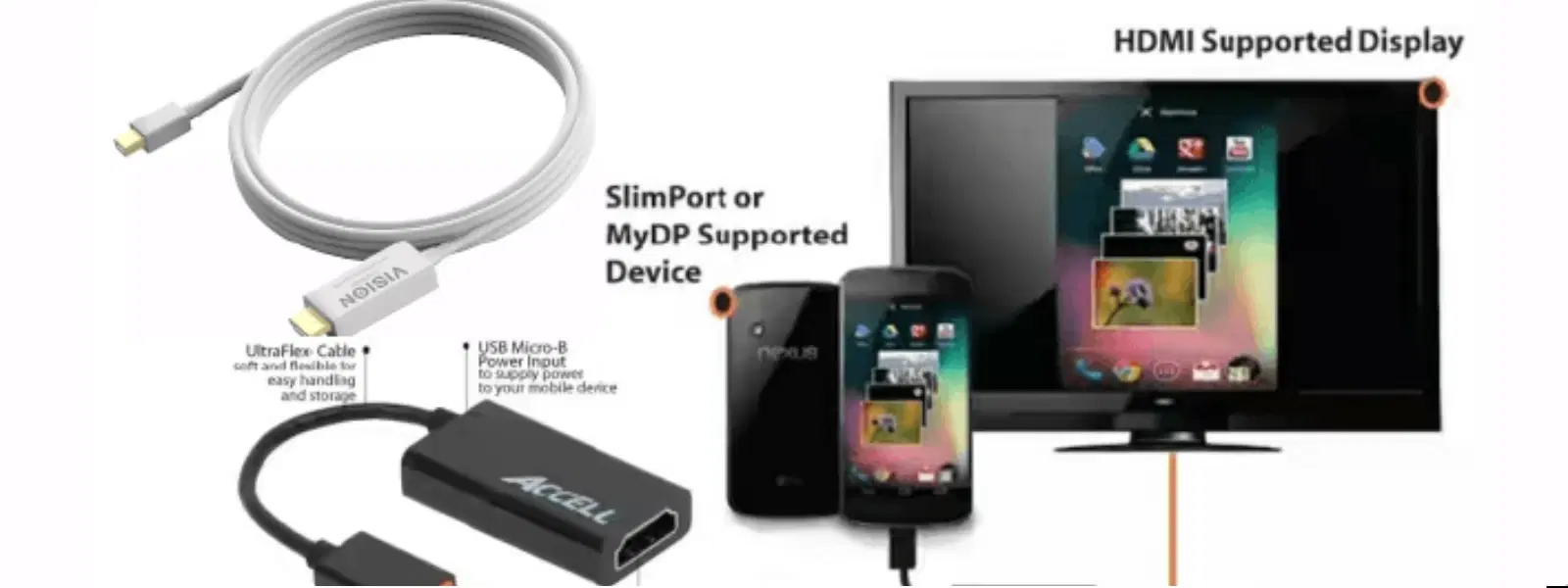
Consumer Electronics
•04 min read
Discover the ease and versatility of USB cable casting for screen mirroring. This FAQ guide is designed to answer your questions on how to cast using a USB cable, whether you want to connect your phone to a TV, PC, or another device. In this article, you'll learn step-by-step instructions, troubleshooting tips, and insights into making the most of your USB cable screen mirroring experience.
USB cable casting refers to connecting your device directly to a display through a wired medium. It offers a reliable, lag-free connection compared to some wireless methods. With support for various cable types such as USB-C, micro-USB and adapters like HDMI or MHL, the procedure is not only straightforward but also provides a stable full-screen experience.
The technology behind USB screen mirroring is essentially about transmitting data from your phone or tablet directly to a TV or PC. This ensures that what appears on your device is replicated on the larger screen instantly, making it an ideal solution when you want to enjoy videos or presentations without interruption.
One key advantage of using a USB connection is the enhanced video quality it offers. It does not rely on an internet connection and is widely compatible, even with some older devices. This method ensures that you get a visually crisp streaming experience without the common issues of wireless lag and interruptions. In addition, whenever you shop on Tata Neu, you earn NeuCoins rewards that allow you to shop smartly while enjoying the convenience and trustworthiness of our platform.
The procedure to cast using a USB cable is simple and effective. Below is a detailed guide to connecting your devices for seamless screen mirroring.
To connect your phone to your TV, first check whether both the phone and the TV have the necessary compatible ports. For modern Android devices, a USB-C to HDMI adapter or a suitable MHL cable can help you connect to a TV that supports these inputs. For iOS devices, using a Lightning to USB adapter in conjunction with supported TVs will ensure your screen is mirrored effectively.
You can also mirror your phone screen to a PC via USB. On Android devices, enabling USB debugging may be necessary, while certain applications can facilitate this process with ease. This method is ideal when you need to present content or share media directly on your computer display.
Once your devices are connected, switch your TV input to the appropriate USB or HDMI mode. Some TVs require you to manually turn on 'USB mode' to enable video casting. Follow your TV’s on-screen instructions and you are all set to enjoy a larger-than-life display of your device's screen.
If you encounter any issues during the casting process, most can be resolved with a few simple checks. For instance, if your TV does not detect your phone, ensure that your cable supports data transfer and that USB debugging is activated on your phone.
When there is no sound or video, verify if your adapter is functional and that the connected file formats are supported. In cases where the display quality is not up to standard, adjusting the settings on both your phone and TV may help in resolving flickering or poor resolution issues.
Sometimes the devices you use might not support screen mirroring via USB. In such cases, using HDMI adapters or exploring wireless casting options could provide the solution you need.
Did you know? Not all USB cables are created equal! To ensure smooth screen mirroring, look for cables that support data transfer and video output, such as USB-C to HDMI or MHL-certified cables. Using standard charging cables may only allow file transfers and not screen mirroring.
Beyond everyday mirroring, USB casting opens up several innovative ways to share content. Whether you want to stream media, engage in gaming, or cast videos on non-smart TVs, USB connections offer a versatile approach.
Using a USB cable for streaming videos, photos, or presentations can enhance your viewing experience. This method is especially great when you want a reliable connection that won’t falter midway through your favourite movie or presentation.
For gaming enthusiasts, USB cable smartphone casting can deliver a more immersive experience. By mirroring your game screen to a larger display, you can enjoy enhanced visuals and smoother gameplay.
If your TV is not smart-enabled, all is not lost. You can use USB-to-VGA or USB-to-RCA adapters to bridge the gap. Just ensure that your device supports such outputs and adjust your TV settings accordingly.
Yes, you can cast to a TV using a USB cable if your phone and TV support screen mirroring via USB. You may need additional adapters like USB-C to HDMI or MHL cables for compatibility.
Yes, USB-C cables can support screen mirroring if your device is compatible with technologies such as DisplayPort or HDMI over USB-C.
You can use USB-to-VGA or USB-to-RCA adapters for TVs that do not have HDMI inputs. Ensure your phone supports these outputs before connecting.
Possible reasons include using a cable that does not support data transfer, not enabling USB debugging on your phone, or having the TV set to the wrong input mode. Check these settings to resolve the issue.
Yes, you can use USB debugging or apps like Vysor or ApowerMirror to cast your phone screen to a PC effectively.
To summarise, USB cable casting provides a simple and effective way to mirror your phone screen to TVs, PCs and other devices. By understanding the basics, following the set-up instructions and utilising the troubleshooting tips mentioned in this guide, you can enjoy seamless screen sharing. Explore the world of innovative consumer electronics with Tata Neu and earn NeuCoins every time you shop, ensuring you not only enjoy a great service but also benefit from extra value with every transaction.